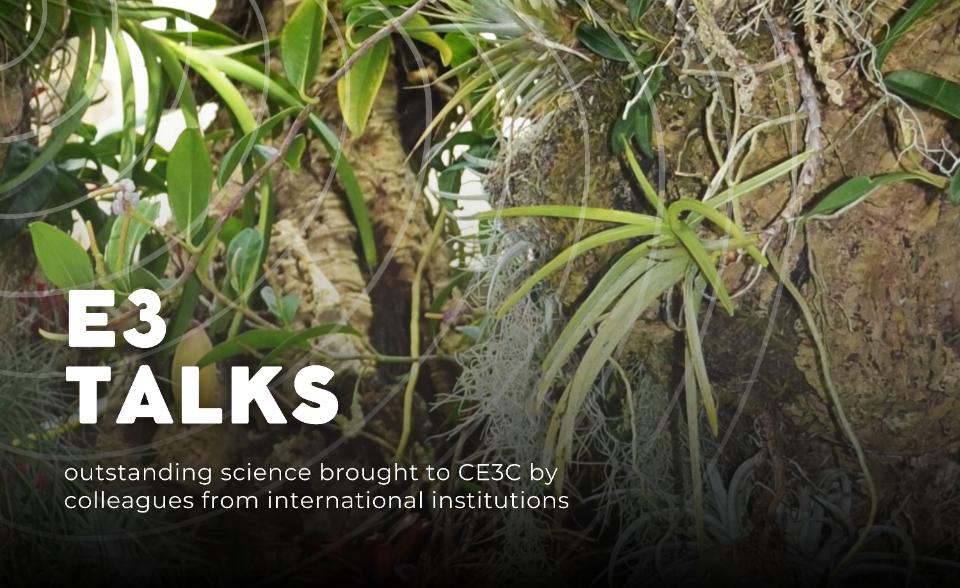-
Date:
18 Jul 2023
-
Location:
Room 2.2.21 - Faculty of Sciences of the University of Lisbon
-
Schedule:
12h00 (Lisbon time)
-
Lecturer or Responsible:
Casandra Reyes-García

Online access • LINK
Password • 261467
The Bromeliaceae is a neotropical vascular plant family that has wondered plant ecophysiologists due to their diverse adaptations to living in the canopy. Epiphytes in this family may have water impounding reservoirs between their wide leaf bases, displayed in a rosette (called tanks), or may have reduced thin leaves that are more drought tolerant (called atmospherics). Intricated, scale like leaf trichomes substitute the root function of absorbing water and nutrients.
We recently reviewed the functional groups using a trait database from 204 bromeliad epiphyte species distributed throughout the American continent. We performed a hierarchical cluster analysis with 16 functional traits and a discriminant analysis, and obtained five groups, C3 tank and CAM tank bromeliads with deep tanks, while the atmospheric group was divided into nebulophytes (which specialize in catching fog), bromeliads with shallow tanks, and bromeliads with pseudobulbs. In the present talk I will exemplify the adaptations that differentiate these functional groups and how their distribution relates to climatic variables and canopy structure.
We have been experiencing some technical issues regarding the authentication/connection to the Zoom platform through FCCN. For that, we apologise for any difficulties during the transmission.

